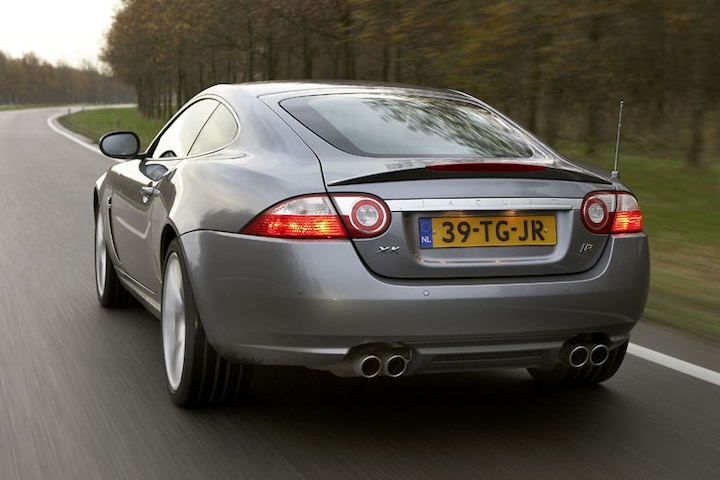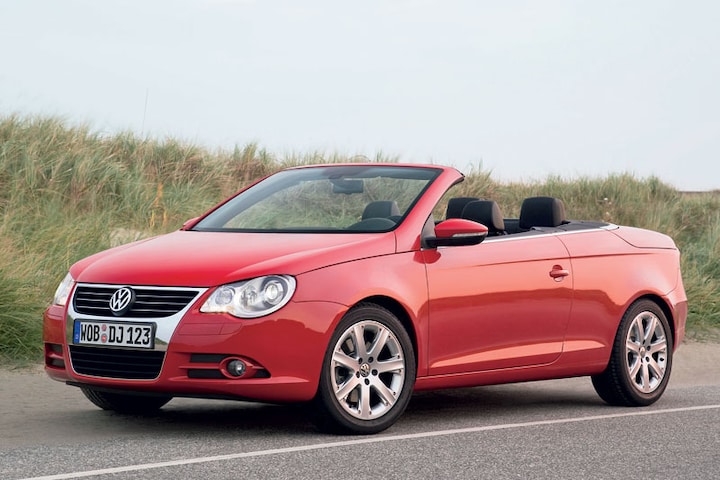The young timer scheme is popular among business drivers in the Netherlands. When cars are 15 years old, they are eligible for the favorable addition rate. Every year, therefore, ‘new’ models are added that can be driven inexpensively for business. We list a bunch of ‘interesting debutants’ that were available in both coupé and convertible form – or a combination of these – in 2006.
First, a quick refresher on the young timer scheme for those who are less at home in addition land. If you drive more than 500 private kilometers with your business car, you add 35 percent of the current market value of the car to your taxable income annually. This addition percentage only applies if your car has the young timer status, i.e. when the vehicle is at least 15 years old. The current market value is in most cases quite favorable, so you pay relatively little addition and at the same time can deduct all car costs from the operating profit. The favorable addition rate starts from the day the car turns 15 years old, measured from the first international registration. So you have to keep a close eye on that. You cannot buy the car earlier and only then decide to add it. While you are driving for business, you can choose whether or not to add, but that means that you may not drive your car privately until January 1, 2022, if you initially decide not to add.
Looking for a coupé or a convertible of 15 years or older that is fiscally attractive to drive from next year? Then pay attention, we list a few:
1. Alfa Romeo Brera / Spider

Looking for an Italian beauty as a young timer? Then the Alfa Romeo Brera might be a nice option. Or, if you like to drive open, the Spider. In the autumn of 2005, Alfa Romeo already started production of the Brera, so it will not be completely new as a young timer next year. However, the range is much wider, because in 2006 there were 8,248 Breras produced, compared to 1,630 in 2005. The Spider was built for the first time in 2006. Initially, the Brera was available with three engines: a 2.2 JTS four-cylinder with 185 hp, a 3.2-liter V6 with 260 hp and a 2.4-liter JTD turbo diesel with 200 hp. The Spider only had the first two power sources at its introduction. Both Alfas have dried up well and have unique appearances in the street scene. However, the reliability is and remains an Italian ailment, so make sure that the maintenance has been properly carried out.
2. Jaguar XK

Leave it to the British to build stylish coupes. In 2006, Jaguar introduced the second generation of the XK, a coupé that was widely praised at launch for its smooth lines and balanced proportions. The design comes from the case of Ian Callum, the designer who was responsible for the Aston Martin DB7 and Vanquish, among other things. The X150, as the code name of the second generation XK is, was available as a coupé and a convertible. Initially, it only came on the market with a naturally aspirated 4.2 V8. This block releases 300 hp on the rear wheels and propels the XK to 100 km / h in 6.2 seconds. The top speed is limited to 250 km / h. Today these are no longer exceptionally spectacular values, but the XK is still well fed up. For those who are not enough, there is the XKR, which entered the market in September 2006. The V8 got a supercharger and produces 420 hp, so that the acceleration to 100 km / h is already done in 5.2 seconds. The XKR can be recognized by additional cooling slots in the hood and four exhaust pipes. This generation of Jaguars is known as relatively reliable. However, that does not alter the fact that the XK was an expensive car at the time, with corresponding parts prices. Something to keep in mind.
3. Volkswagen Eos

The Volkswagen Eos can be seen as the spiritual successor of the Golf Cabriolet. With the Golf V it got its own name and a more idiosyncratic design. The name Eos refers to the Greek goddess of the sunrise. In terms of appearance, the Eos actually has little in common with the Golf. The underlying technology is the same, but the Eos is a four-seater with a steel folding roof, which makes it possible to pass for a coupé in closed form. In addition, there was a sliding glass roof in that folding roof. Perhaps it sounds superfluous, but the Eos was a pretty versatile convertible. However, the mechanism is quite complex and certainly not free of leaks in the early versions. So be careful if you want to drive a fiscally attractive Eos next year. The coupé-convertible came with a whole range of engines, so there is something for everyone.
4. Volvo C70

Another four-seater convertible with a steel folding roof, but from Sweden. The second generation of the Volvo C70 entered the market in 2006 and in fact offered two cars for the price of one. You could only get the first generation of the C70 either as a coupé or as a convertible. From the 2006 generation, the C70 shared its platform with the S40. The engine range in 2006 consisted only of five cylinders: the 140 hp 2.4, the 2.4i with 170 hp and the T5 as the topper with 220 hp. At first, diesel was only possible with the 180 hp strong D5. If sportsmanship is your thing, you have to walk around the C70 with a big bow. The chassis has been slightly lowered compared to the S40, but above all aimed at comfort. However, with the typical five-cylinder drum roll in the background, it must be a good place!